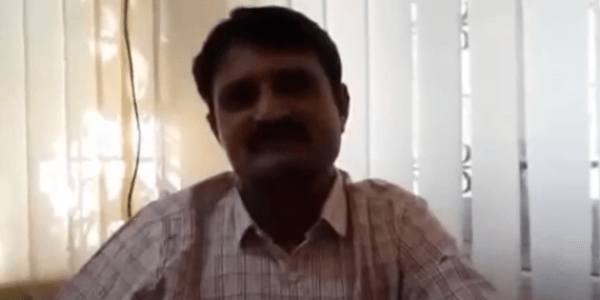Welcome to an exploration of Stem Cell Treatment for CCSVI Liberation, a groundbreaking approach that aims to address the complexities of Chronic Cerebrospinal Venous Insufficiency (CCSVI). Coined by Dr. Paulo Zamboni, an Italian physician, CCSVI refers to a medical condition where normal blood flow is hindered, causing blood to reflux through new vessels and leading to leakage into surrounding tissues.
This leakage triggers an autoimmune response linked to the development of Multiple Sclerosis (MS). In this overview, we delve into the symptoms of CCSVI, the innovative CCSVI Liberation Process, and the varying costs associated with this transformative treatment. Join us as we navigate the realm of cutting-edge medical advancements in the pursuit of improved quality of life for those affected by CCSVI and MS.
Video Summary
Stem Cell Treatment for CCSVI Liberation involves addressing Chronic Cerebrospinal Venous Insufficiency (CCSVI), a condition where blood flow in the neck and veins becomes restricted, causing blood to reflux and leak into surrounding tissues.
This can lead to iron deposits in the Central Nervous System (CNS) and an autoimmune response linked to Multiple Sclerosis (MS). CCSVI symptoms include difficulties in swallowing, headaches, fatigue, language issues, and more.
The CCSVI Liberation Process, also known as Liberation Therapy, aims to unblock restricted blood flow, potentially reversing the effects of MS.
This approach differs from traditional stem cell treatments by focusing on physical changes to combat the disease.
Costs vary globally, with Mexico charging $25,000, Frankfurt’s CCSVI Center costing between $12,740 and $17,987, and India offering CCSVI Screening and Liberation Therapy for $5,600.
In Canada, the CCSVI Clinic’s Combination Therapy with true stem cells amounts to $35,000.
Find more Patient Stories here to make an Informed Decision
What is Stem Cell Treatment for CCSVI Liberation
Table of Content
Chronic Cerebrospinal Venous Insufficiency (CCSVI) is a medical condition characterized by impaired blood flow in the veins that drain blood from the central nervous system. This condition has been suggested to be associated with various neurological disorders, including multiple sclerosis (MS).
The concept of CCSVI was first introduced by Dr. Paolo Zamboni, who hypothesized that the restricted blood flow caused by narrowed or blocked veins could contribute to the development of MS symptoms.
Understanding CCSVI (Chronic Cerebrospinal Venous Insufficiency)
CCSVI is a controversial and debated topic within the medical community. While some studies have supported the idea that CCSVI is linked to MS and other neurological disorders, other research has failed to replicate these findings.
The main CCSVI theory posits that abnormalities in the veins that drain blood from the brain and spinal cord could lead to blood reflux and compromised venous drainage. This, in turn, might result in inflammation and damage to the nervous system.
Symptoms of CCSVI can include fatigue, pain, numbness, and difficulty with mobility. However, these symptoms are also common in various neurological conditions, making it challenging to definitively attribute them to CCS
Unraveling CCSVI: Causes and Symptoms
Chronic Cerebrospinal Venous Insufficiency (CCSVI) is a medical condition characterized by compromised blood flow in the veins responsible for draining blood from the brain and spinal cord.
Explaining CCSVI and its Impact on Health
Chronic Cerebrospinal Venous Insufficiency (CCSVI) is a medical condition that revolves around impaired blood flow in the veins responsible for draining blood from the brain and spinal cord. The concept gained prominence due to its proposed association with neurological disorders, particularly multiple sclerosis (MS). The underlying idea behind CCSVI is that constricted or obstructed veins can lead to blood flow abnormalities, potentially causing inflammation and damage to the central nervous system.
The primary hypothesis is that compromised venous drainage could lead to blood reflux, where blood flows backward into the brain and spinal cord. This reflux might trigger inflammation, oxidative stress, and the accumulation of iron deposits in the nervous tissue, all of which are believed to contribute to the development of MS symptoms.
Identifying Common Symptoms and Challenges Faced by Patients
CCSVI presents a range of symptoms that can vary in severity among affected individuals. However, these symptoms are not exclusive to CCSVI, often overlapping with those of other neurological conditions. Some of the commonly reported symptoms include:
- Fatigue: Patients often experience severe fatigue, which can significantly impact their quality of life and daily functioning.
- Pain and Numbness: Chronic pain, often described as aching or burning, and numbness in the limbs are common symptoms. These can affect mobility and cause discomfort.
- Cognitive Impairment: Difficulties in concentration, memory problems, and reduced cognitive processing speed can arise, affecting patients’ cognitive abilities.
- Motor Issues: CCSVI may contribute to muscle weakness, spasticity, and coordination problems, making movement challenging.
- Visual Disturbances: Blurred vision, double vision, and other visual problems might occur due to nervous system involvement.
Diagnosing CCSVI can be complex, as symptoms can overlap with various other conditions. Moreover, the association between CCSVI and MS remains debated within the medical community. Some studies have reported a connection, while others have found no conclusive evidence to support this link.
Patients with suspected CCSVI often face challenges in obtaining a definitive diagnosis and appropriate treatment. The controversial nature of the condition has led to differing opinions among medical professionals. Furthermore, the effectiveness of treatments, including surgical interventions to alleviate vein constriction, remains under scrutiny.
The Promise of Stem Cell Therapy
Stem cell therapy holds significant promise in revolutionizing the approach to treating various medical conditions, including Chronic Cerebrospinal Venous Insufficiency (CCSVI). Stem cells are unique cells with the remarkable ability to differentiate into different cell types and regenerate damaged tissues. This therapeutic approach capitalizes on the regenerative potential of stem cells to address underlying issues and promote healing within the body.
How Stem Cells Can Address Underlying Issues in CCSVI
In the context of CCSVI, stem cell therapy offers a novel avenue for tackling the condition at its root. The impaired blood flow and inflammation associated with CCSVI can lead to damage within the central nervous system. Stem cells, when introduced into the affected area, can contribute to tissue repair and regeneration. They can differentiate into various cell types, including endothelial cells that line blood vessels, promoting the growth of new, functional vessels. This could potentially enhance blood flow, reduce inflammation, and improve overall tissue health.
Types of Stem Cells Used in Treatment
There are several types of stem cells that can be used in therapeutic applications. These include:
- Embryonic Stem Cells (ESCs): Derived from embryos, these pluripotent cells have the potential to differentiate into any cell type in the body. However, their use is ethically controversial and can pose risks of immune rejection.
- Adult Stem Cells: Also known as somatic or tissue-specific stem cells, these are found in various adult tissues and organs. They have a more limited differentiation potential compared to ESCs but pose fewer ethical concerns.
- Induced Pluripotent Stem Cells (iPSCs): These are adult cells that have been reprogrammed to exhibit pluripotent characteristics similar to embryonic stem cells. iPSCs offer the potential to generate patient-specific cells for transplantation, reducing the risk of immune rejection.
Differentiating Between Embryonic, Adult, and Induced Pluripotent Stem Cells
Embryonic stem cells are derived from embryos and have the potential to become any cell type in the body. However, their use raises ethical questions and can lead to immune rejection if not matched properly. Adult stem cells are present in various tissues and have a more limited differentiation potential, often differentiating into cell types specific to their tissue of origin. Induced pluripotent stem cells are generated from adult cells through reprogramming and offer a balance between pluripotency and ethical considerations.
Selecting the Most Appropriate Stem Cell Type for CCSVI
The choice of stem cell type for CCSVI treatment depends on various factors, including the severity of the condition, patient-specific characteristics, and ethical considerations. Adult stem cells and induced pluripotent stem cells are generally preferred due to their reduced ethical concerns and potential compatibility with the patient’s immune system. The specific approach will need to be tailored to each patient’s unique medical profile.
In summary, stem cell therapy presents an innovative approach to addressing CCSVI by harnessing the regenerative capabilities of stem cells. The choice of stem cell type is crucial and should be based on scientific understanding, medical ethics, and individual patient needs. Further research and clinical trials are essential to determine the safety and effectiveness of stem cell-based interventions for CCSVI.
Book Appointment
Explore the potential of stem cell therapy in addressing Chronic Cerebrospinal Venous Insufficiency (CCSVI). Discover how stem cells could target underlying issues, aiding in tissue repair and improved blood flow.
Uncover the latest advancements in this innovative approach, paving the way for a new era in CCSVI management. Learn more about how stem cell therapy could be the breakthrough solution you’ve been seeking.





